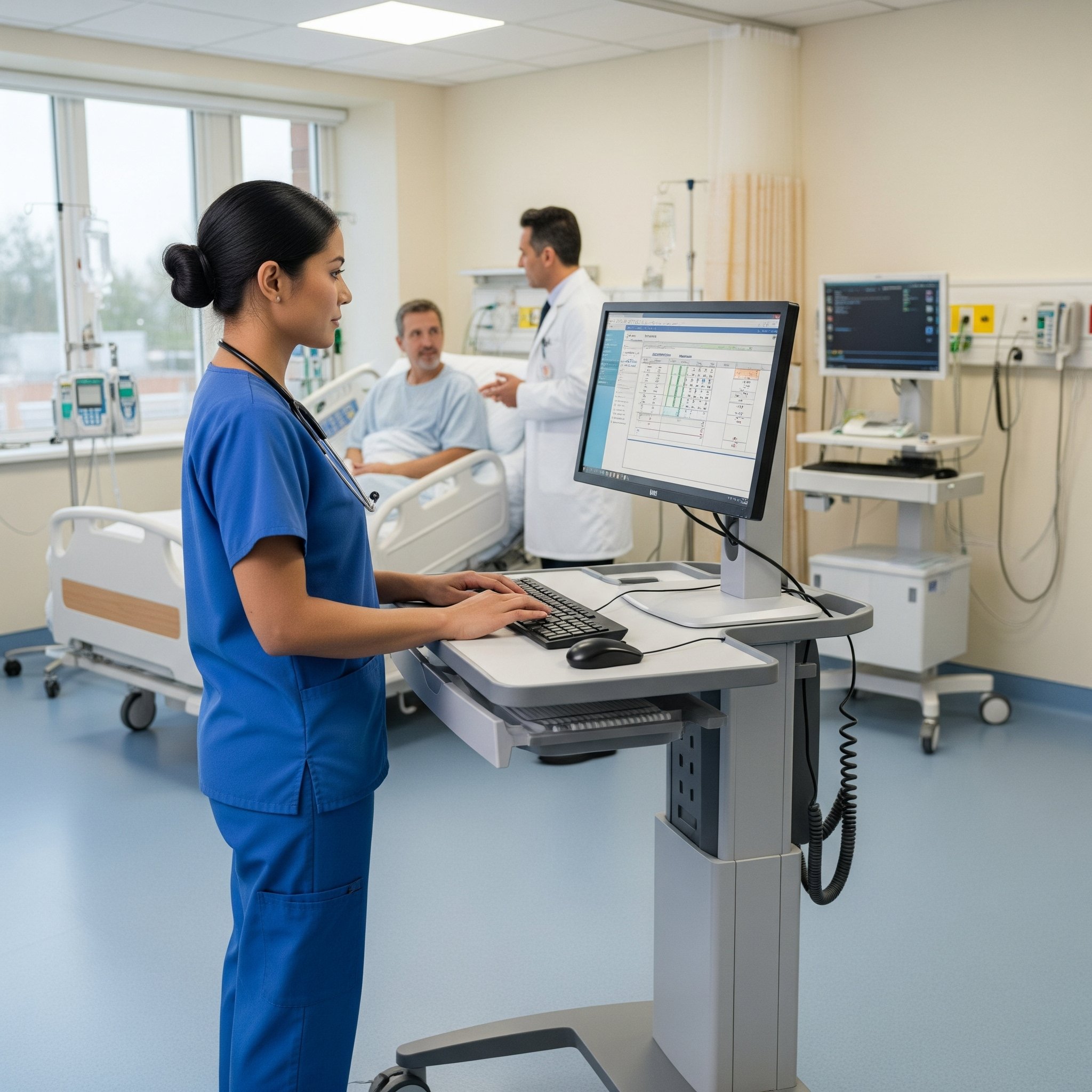In Healthcare, Identity Is a Clinical Problem—Not Just a Security One
In hospital environments, authentication is intended to protect patients and their data. However, it often becomes a source of friction that delays care, frustrates clinicians, and contributes to burnout. It’s a problem hiding in plain sight, and most hospitals struggle to resolve it.
Hospitals are not typical IT environments. Clinicians don’t work at fixed desks, phones are often banned, and legacy systems live alongside cloud apps. Every second wasted navigating from app to app and authenticating is time stolen from the delivery of patient care. For hospitals, that’s not just inefficient, it’s dangerous.
The real problem isn’t just authentication, though; it’s the underlying workflow paradigms that need to be addressed. Authenticating clinical identity is broken because traditional MFA solutions don’t reflect how care is actually delivered. The result? Healthcare workforces face mounting clinician frustration, which leads to burnout, slower care delivery, and a rising risk of security and compliance failures.
Why Traditional MFA Doesn’t Work in Hospitals
In most industries, identity security is primarily about user control, but in hospitals, it must also prioritize clinical enablement. Hospitals are high-friction, high-compliance, high-mobility environments. You can’t strap a phone to every nurse or require clinicians to carry tokens. You can’t slow down shift changes or patient handoffs because someone’s locked out of a shared workstation.
And when the solution is more authentication or an additional factor without rethinking the authentication experience, you compound the problem.
This isn’t a technical flaw. It’s a category mismatch. Traditional IAM products were never designed to support dynamic clinical workflows. Healthcare environments and systems demand authentication that’s invisible, adaptive, and always on.
Shared Workstations Are a Patient Care Bottleneck
 Most clinical staff don’t have dedicated devices. Clinicians, nurses, and physicians move between dozens of workstations during a single shift. But most authentication tools assume the opposite: that users stay anchored to one trusted device. This mismatch forces clinicians into repetitive, high-friction logins that slow down patient care. It also opens the door to risky workarounds, such as password sharing.
Most clinical staff don’t have dedicated devices. Clinicians, nurses, and physicians move between dozens of workstations during a single shift. But most authentication tools assume the opposite: that users stay anchored to one trusted device. This mismatch forces clinicians into repetitive, high-friction logins that slow down patient care. It also opens the door to risky workarounds, such as password sharing.
At scale, that adds up, not just to lost time, but to cognitive fatigue as well. For clinicians already facing burnout, poor authentication is more than an annoyance; it’s a daily tax on their time and energy.
Phone Restrictions Make Modern MFA Unworkable

There are several reasons why mobile phones are restricted in healthcare environments. One is to protect patient privacy and minimize distractions. The second reason is to maintain sterile environments; many hospitals restrict or ban mobile phones in key clinical areas. This means that most mainstream MFA options—such as push notifications, SMS codes, and authenticator apps—are off the table. However, this policy also limits the ability to use biometric factors for authentication, such as fingerprint or facial scanning, because PPE renders them ineffective.
Any security strategy that relies on phones is a non-starter in hospitals. And forcing clinicians to find clunky workarounds doesn’t just frustrate them, it adds friction to critical care decisions.
Legacy Systems Make Identity Fragmented and Fatiguing
Hospitals don’t run on one platform; they run on dozens, sometimes hundreds. Some apps are cloud-based. Others are decades old. SSO coverage is patchy. And federated identity across departments and affiliates creates even more complexity.
The outcome is a fragmented authentication experience, where clinicians are required to log in multiple times and in various ways to perform a single task. That’s not just inefficient, it increases the risk of errors, delays patient care, and again, increases the chances of noncompliance.
One Hospital’s Fix: Identity That Moves With the Clinician
One of the large U.S. healthcare systems faced this exact situation. Their clinicians were overwhelmed with login prompts, long, complex passwords, session timeouts, and MFA that didn’t fit the clinical context. Staff were frustrated, and a senior employee even stated they were experiencing a “revolt” as a result of increasing friction. Burnout was climbing. Help desk tickets were constant. And worst of all, care delivery was being impacted.
Instead of layering on more hardware or mobile-based tools, they took a different route: a software-only approach to Continuous Authentication that works invisibly in the background to automate the push response required for passwordless authentication.
This hospital deployed the Twosense Continuous Authentication and Continuous Access Evaluation platform, which utilizes behavioral biometric signals, such as typing rhythm, mouse movement, and real-time behavioral patterns, to continuously authenticate its workforce. That meant no phones, no tokens, and no additional steps for users. Just an invisible, secure, always-on identity solution that moved with them from workstation to workstation.
The Results
Clinicians Noticed—Because the Friction Was Gone
Clinical team members described the experience as “just working,” a sharp contrast to the prior environment, where logging in was a persistent source of friction and led to delayed care.
IT teams saw reduced support volume. Clinical leaders saw faster workflows. However, the most significant impact was on the clinicians themselves, who reported experiencing less stress, greater focus, and more time for patient care.
- Fewer interruptions during patient interactions
- No delays when switching workstations
- No re-authentication prompts after brief breaks or relocations
- More time at the bedside, less time at the keyboard
While this hospital had struggled with a failed passwordless rollout before adopting Twosense, that wasn’t the main success story. The breakthrough came from aligning identity with clinical reality. Continuous Authentication, done right, isn’t just about verifying identity; it’s about getting out of the clinician’s way so they can focus on care, not credentials.
Real Impact on Care Delivery in a Leading U.S. Healthcare System
- 979,000+ secure logins
- 17,000 users
- 173 critical apps protected
- 89% reduction in failed logins
- 91% of authentications automated without user prompts
- 100% software-only deployment
From Authentication to Clinical Infrastructure
The results speak for themselves. But what made this rollout a success wasn’t just the stats. It was the shift in mindset: authentication became part of the clinical stack, not just the security stack. Because it ran invisibly in the background, clinicians didn’t need training. Because it worked across shared workstations, IT didn’t need new hardware. And because it supported federated identities, it didn’t disrupt the hospital’s partnership or academic affiliations.
The takeaway? Identity in healthcare must evolve beyond login boxes and MFA codes. It must reflect how clinicians actually work—shared devices, mobile restrictions, quick context switches—and it must do so without adding more to their plate.
Continuous Authentication doesn’t just improve security, it removes friction, reduces interruptions, and gives time back to every user. And in environments where seconds can make a difference, that’s a clinical advantage, not just a security one.


-1.jpeg)
.jpeg)